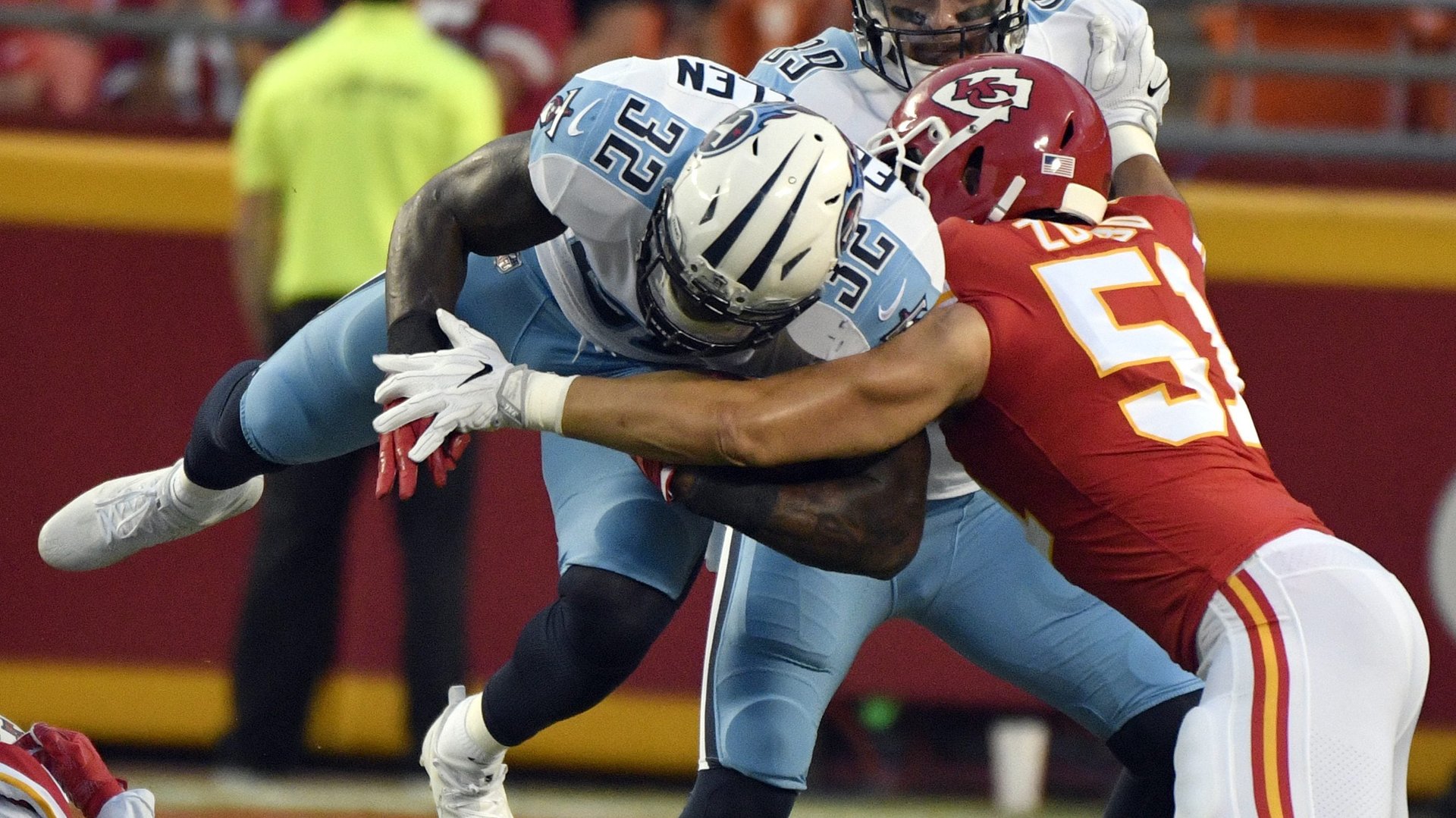How the $7 billion US fantasy football industry makes its money in 2017
For many in the US, the end of summer means the start of the American football season. Along with the usual cookouts, beach outings, and pool parties, some will be celebrating this Labor Day weekend hosting draft parties for their fantasy football leagues.


For many in the US, the end of summer means the start of the American football season. Along with the usual cookouts, beach outings, and pool parties, some will be celebrating this Labor Day weekend hosting draft parties for their fantasy football leagues.
Fantasy football—in which grown men and women pretend to be the owners of imaginary professional sports teams on the internet—is a particularly American phenomenon, a form of sports gambling built out of a loophole in the law that normally bans such betting. It’s a growing industry, estimated to be worth more than $7 billion a year in the US and Canada and to have 59 million players, according to the Fantasy Sports Trade Association.
That includes free leagues on sports sites like Yahoo Sports and ESPN, as well as the daily fantasy football sites like DraftKings and FanDuel that offer big payouts for weekly contests during the season. DraftKings is offering players the chance to win up to $1 billion during the first week of match ups alone.
So, how do all these services make money?
DraftKings and FanDuel
Daily fantasy football sites like DraftKings and FanDuel, which offer fantasy players the chance to win NFL-sized payouts, earn most of their revenue by charging fees to participate in their cash-prize contests and taking a cut. FanDuel takes a cut of around 10%, for example, and the rest of the fees help fund the payouts. Gamblers call this cut a “rake.”
Unlike average fantasy-football leagues, where each team drafts a roster of NFL players that they stick with throughout the season, these sites offer new contests weekly. They require little commitment on the player’s part, and give DraftKings and FanDuel more opportunities to collect fees, if they can keep people coming back.
The business model seemed to be working for awhile. In 2015, DraftKings and FanDuel reportedly brought in a combined $3 billion from entry fees. But the sites also hemorrhaged money on marketing, lobbying the government, and fighting legal and regulatory battles.
Last year, they began looking into other revenue sources like advertising, and co-produced videos with brands and sold tournament sponsorships, Bloomberg reported. DraftKings brought in $160 million that year and made a $92 million loss, Axios reported.
CBS, Yahoo, and ESPN
Advertising is also how sites like Yahoo Sports, ESPN, and NFL.com support their free fantasy-sports leagues. The leagues also drive more traffic (and thus ad revenue) to those websites’ other pages: If your fantasy team is on ESPN, you’re more likely to visit ESPN for stats and other updates.
Some also use the free leagues to tempt people into paying for extra services. CBS Sports, for example, has a free league option and a version, normally priced at $180, that includes customizable options and allows for more teams.
Draft parties
Sites like FanDuel and Yahoo Sports aren’t the only businesses to benefit from the growing fantasy sports industry. The average adult player is expected to spend around $556 a year on things like entry fees, prizes, league materials such as boards for the “draft” (when teams pick their players), and draft and viewing parties in 2017, according to the Fantasy Sports Trade Association.